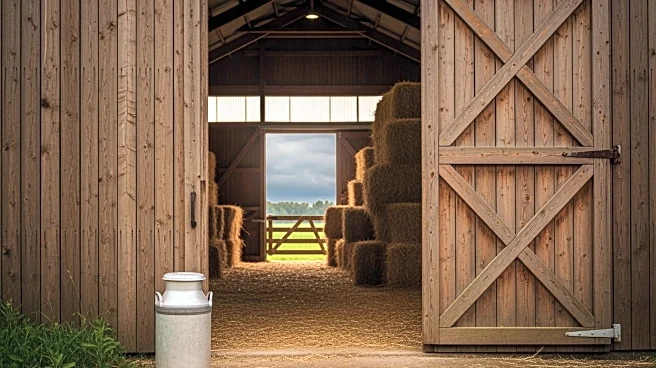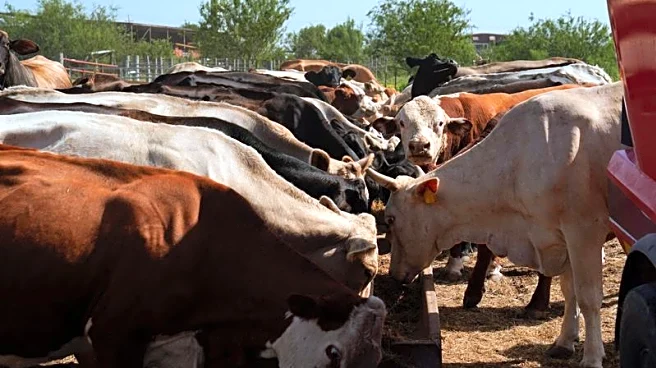What's Happening?
The USDA has released several reports detailing significant changes in agricultural production and market conditions. The number of cattle and calves on feed as of November 1 totaled 11.7 million head,
marking a 2% decrease from the previous year. Placements into feedlots in October were notably low, with a 10% year-over-year drop, the lowest since record-keeping began in 1996. Meanwhile, milk production in 24 major states rose by 3.9% annually to 18.7 billion pounds. Additionally, strong winds are forecasted for southern South Dakota and northern Nebraska, with gusts up to 60 mph, potentially causing damage and power outages.
Why It's Important?
These developments have significant implications for the agricultural sector. The decline in cattle placements could affect beef supply and prices, impacting farmers and consumers. The increase in milk production suggests a potential shift in dairy market dynamics, possibly affecting pricing and supply chain operations. Weather conditions, such as the forecasted high winds, pose risks to infrastructure and agricultural operations, potentially leading to economic losses and disruptions in affected areas.
What's Next?
Farmers and agricultural stakeholders will need to adapt to these changing conditions. Strategies may include adjusting cattle feeding practices and exploring alternative markets for dairy products. Weather-related challenges will require preparedness measures to mitigate potential damage and ensure continuity in operations. Monitoring market trends and government reports will be crucial for stakeholders to make informed decisions.
Beyond the Headlines
The broader implications of these agricultural trends may include shifts in consumer prices and potential policy responses to support affected farmers. Environmental factors, such as weather patterns, continue to play a critical role in agricultural productivity, highlighting the need for sustainable practices and resilience planning.














